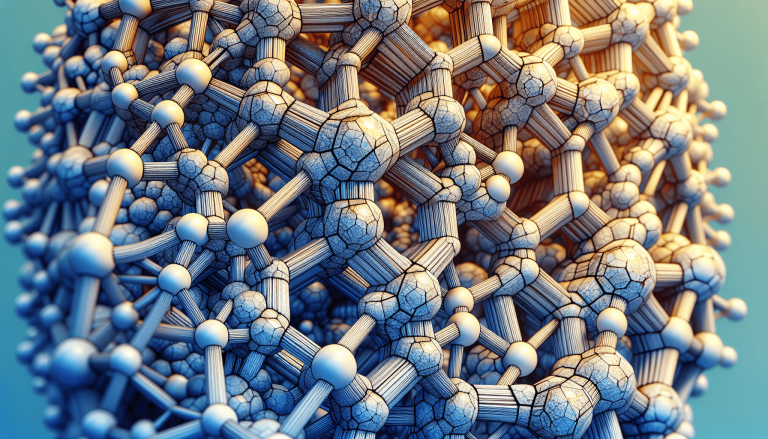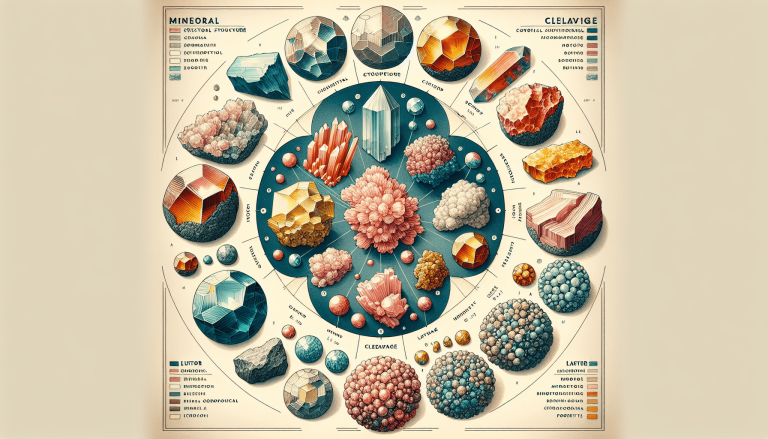Comparing The Chemical Properties Of Minerals With Different Light Transmission Properties
In this article, you will explore the fascinating world of minerals and their unique chemical properties that can affect their light transmission capabilities. By understanding how the composition of minerals influences their ability to transmit light, you will gain a deeper appreciation for the diverse array of minerals found in nature. From the stunning transparency of quartz to the opaque nature of pyrite, each mineral has its own distinctive qualities that contribute to its overall appearance and function. Join us on this journey as we delve into the intricate relationship between chemical composition and light transmission in minerals. Have you ever wondered how minerals with different light transmission properties differ chemically? Let’s dive into the fascinating world of minerals and explore the relationship between their chemical composition and their ability to transmit light.

Understanding Light Transmission Properties in Minerals
Light transmission properties in minerals refer to how light passes through them. Some minerals are transparent, allowing light to pass through them with minimal absorption or scattering. Others are translucent, permitting some light to pass through but diffusing it in the process. Lastly, some minerals are opaque, blocking light completely.
When it comes to studying minerals, understanding their light transmission properties can provide valuable insights into their chemical composition. By comparing the chemical properties of minerals with different light transmission properties, we can gain a deeper understanding of how their atomic structure influences their interaction with light.
Transparent Minerals: A Clear Window into Chemical Composition
Transparent minerals, such as diamond and quartz, are prized for their clarity and brilliance. These minerals allow light to pass through them virtually unimpeded, showcasing their pristine beauty. The high level of transparency in these minerals is a result of their crystal structure, which allows light to travel through without being scattered or absorbed.
When comparing the chemical properties of transparent minerals with those of translucent or opaque minerals, one can observe unique characteristics that contribute to their optical clarity. For example, the arrangement of atoms in transparent minerals is often highly ordered, allowing light to move through the crystal lattice without obstruction. This orderly arrangement results in minimal light scattering, giving transparent minerals their characteristic brilliance.
Translucent Minerals: Allowing Light to Pass Through with a Soft Glow
Translucent minerals, such as calcite and fluorite, exhibit a unique light transmission property where light passes through them but is scattered in the process. This scattering of light gives translucent minerals a soft glow or a cloudy appearance, depending on the extent of light diffusion. While not as clear as transparent minerals, translucent minerals still allow for some degree of light transmission, making them visually appealing in their own right.
The chemical properties of translucent minerals play a significant role in determining their light transmission properties. For instance, the presence of impurities or structural defects in the crystal lattice can cause light to scatter, resulting in the translucent appearance of the mineral. By comparing the chemical composition of translucent minerals with transparent or opaque minerals, researchers can identify the specific factors that contribute to their unique light transmission behavior.
Opaque Minerals: Blocking Light and Revealing Hidden Secrets
Opaque minerals, such as magnetite and pyrite, are known for their ability to block light completely. These minerals appear solid and impenetrable to light, showcasing a dark and opaque appearance. While opaque minerals may not exhibit the same visual appeal as transparent or translucent minerals, their unique light-blocking properties offer valuable insights into their chemical composition and physical structure.
When studying the chemical properties of opaque minerals, researchers can uncover hidden secrets that are not readily visible to the naked eye. By analyzing the atomic arrangement and bonding characteristics of opaque minerals, scientists can gain a better understanding of how light interacts with these minerals at the molecular level. This knowledge can be instrumental in identifying unique mineralogical features and elucidating the geological processes that shaped these opaque minerals over time.
Comparing Chemical Properties of Minerals with Different Light Transmission Properties
Now that we have explored the light transmission properties of transparent, translucent, and opaque minerals, let’s delve deeper into how their chemical properties differ and what insights they can provide about their atomic structure.
Elemental Composition: The Building Blocks of Minerals
The elemental composition of minerals refers to the types and quantities of chemical elements present in their crystal lattice. Different minerals are composed of varying combinations of elements, which determine their unique properties and characteristics. By comparing the elemental composition of minerals with different light transmission properties, we can identify specific elements that contribute to their optical behavior.
| Mineral | Elemental Composition | Light Transmission Properties |
|---|---|---|
| Diamond | Carbon | Transparent |
| Quartz | Silicon Dioxide | Transparent |
| Calcite | Calcium Carbonate | Translucent |
| Fluorite | Calcium Fluoride | Translucent |
| Magnetite | Iron Oxide | Opaque |
| Pyrite | Iron Sulfide | Opaque |
In the table above, we can see that transparent minerals such as diamond and quartz are primarily composed of carbon and silicon dioxide, respectively. These elemental compositions contribute to their high optical clarity and transparency. On the other hand, translucent minerals like calcite and fluorite contain calcium carbonate and calcium fluoride, which give them their characteristic light scattering properties. Opaque minerals such as magnetite and pyrite, which are composed of iron oxide and iron sulfide, block light completely due to their dense atomic structure.
Crystal Structure: The Arrangement of Atoms in Minerals
The crystal structure of minerals refers to the geometric arrangement of atoms or ions within their crystal lattice. The atomic arrangement in minerals is highly ordered, forming repeating patterns that give rise to their unique physical and chemical properties. By comparing the crystal structure of minerals with different light transmission properties, we can identify structural features that influence how light interacts with the mineral.
| Mineral | Crystal Structure | Light Transmission Properties |
|---|---|---|
| Diamond | Cubic | Transparent |
| Quartz | Hexagonal | Transparent |
| Calcite | Trigonal | Translucent |
| Fluorite | Isometric | Translucent |
| Magnetite | Cubic | Opaque |
| Pyrite | Isometric | Opaque |
In the table above, we can observe that transparent minerals such as diamond and quartz have cubic and hexagonal crystal structures, respectively. These crystal structures allow light to pass through the minerals without being scattered, resulting in their high optical clarity. Translucent minerals like calcite and fluorite have trigonal and isometric crystal structures, which contribute to their light scattering properties. Opaque minerals such as magnetite and pyrite also have cubic and isometric crystal structures, blocking light due to their dense atomic arrangement.
Bonding Characteristics: The Interactions Between Atoms in Minerals
The bonding characteristics of minerals refer to the types of chemical bonds that exist between atoms within their crystal lattice. Different minerals exhibit varying bonding configurations, such as ionic, covalent, or metallic bonds, which influence their physical and chemical properties. By comparing the bonding characteristics of minerals with different light transmission properties, we can identify the types of bonds that contribute to their optical behavior.
| Mineral | Bonding Characteristics | Light Transmission Properties |
|---|---|---|
| Diamond | Covalent | Transparent |
| Quartz | Covalent | Transparent |
| Calcite | Ionic | Translucent |
| Fluorite | Covalent | Translucent |
| Magnetite | Metallic | Opaque |
| Pyrite | Metallic | Opaque |
In the table above, we can see that transparent minerals such as diamond and quartz exhibit covalent bonding, which results in strong atomic interactions and high optical clarity. Translucent minerals like calcite and fluorite have ionic and covalent bonding, which contribute to light scattering properties due to weaker atomic interactions. Opaque minerals such as magnetite and pyrite display metallic bonding, resulting in dense atomic packing that blocks light transmission completely.

Conclusion
In conclusion, comparing the chemical properties of minerals with different light transmission properties provides valuable insights into how their atomic structure influences their optical behavior. By understanding the elemental composition, crystal structure, and bonding characteristics of minerals, researchers can gain a deeper appreciation for the unique properties that give rise to their light transmission properties.
Whether transparent, translucent, or opaque, each mineral offers a window into the intricate world of geology and mineralogy. By exploring the relationship between a mineral’s chemical composition and its light transmission properties, we can unlock the hidden secrets that lie within these mesmerizing gems of the Earth. So next time you admire a sparkling diamond or a glowing fluorite crystal, remember that their beauty goes beyond what meets the eye – it’s all about the fascinating chemistry that makes them shine.






